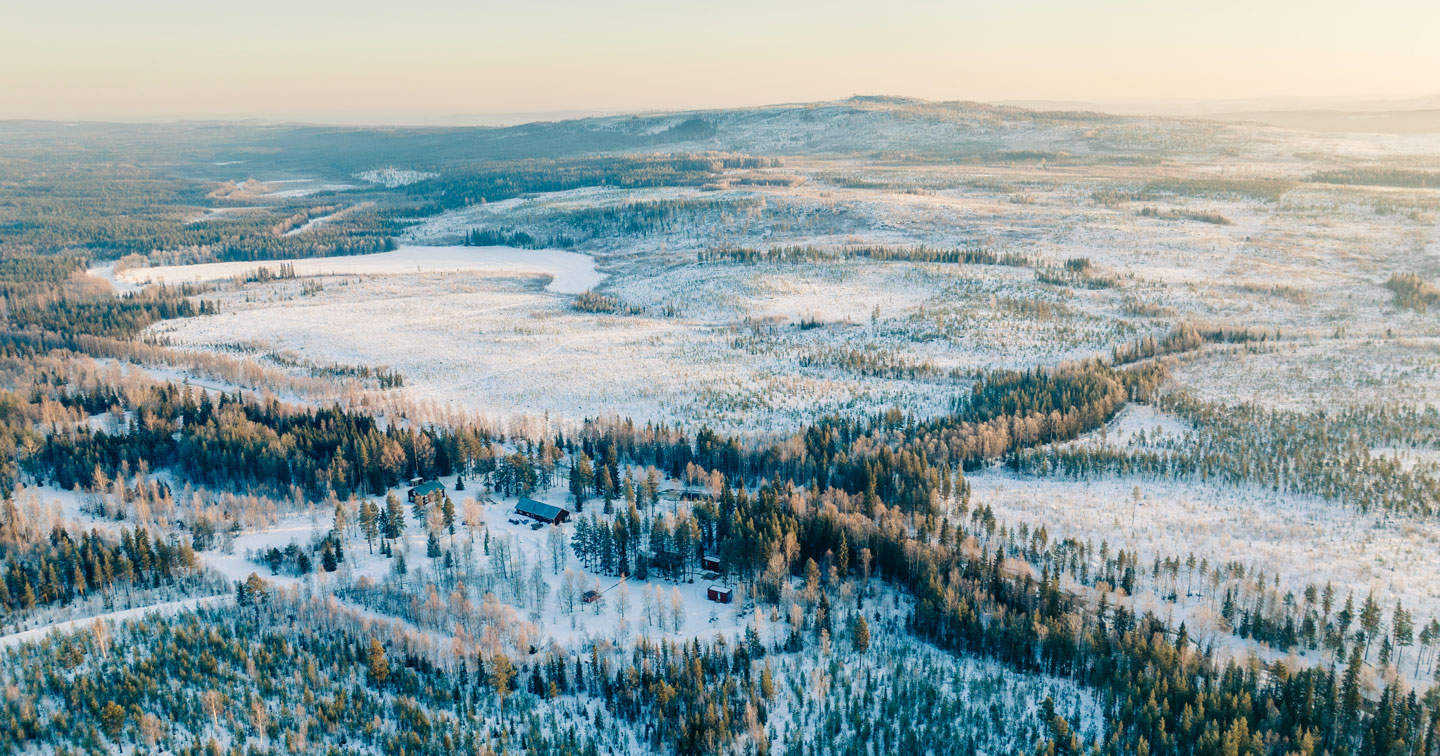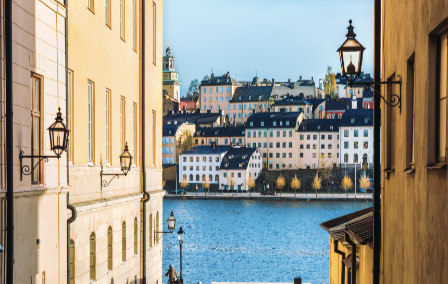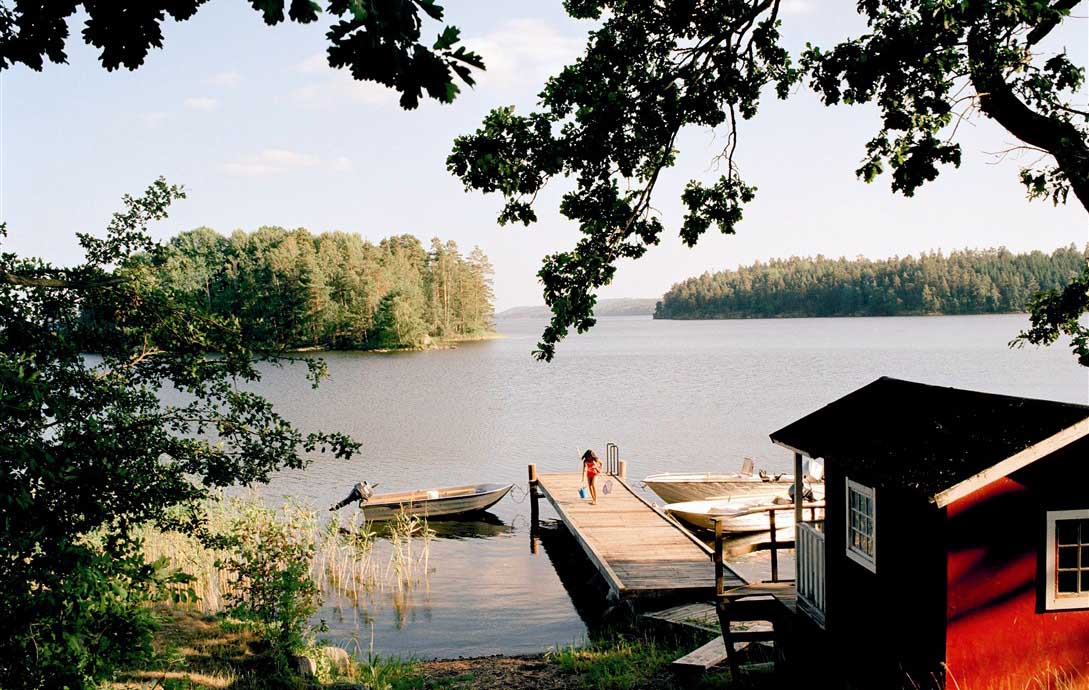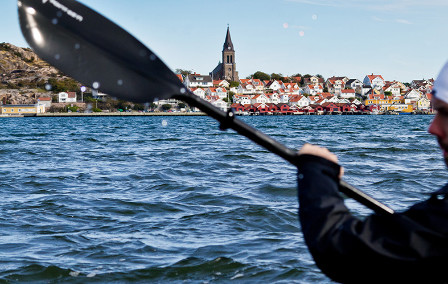Published 27th Apr. 2023
Reading time
Sweden may be a modern society, but its love for traditional festivities runs deep. Food, schnapps and musical merriment are the cornerstones of these events, which have their roots in Christianity, Paganism and sometimes just a good old-fashioned desire to party. Our list of traditions in Sweden features some of the country’s cultural highlights, opportunities to learn what it is to be Swedish and experience its sights, sounds and flavours at their best. Whether you’re dancing round a maypole or listening to songs beside the bonfire, you can expect a taste of the real Sweden at each of these age-old celebrations.
This atmospheric event takes place every year on December 13th to honour St Lucy of Syracuse, a saint who secretly brought food to persecuted Christians in the fourth century. The celebration involves a procession of children in white gowns singing and holding candles, commemorating how Lucia lit her way through the darkness with a candlelit wreath around her head. Luciatåg is also linked to Swedish folklore, which deemed December 13th to be a long and dangerous night filled with dark spirits. Eating helped people to stay awake and alert during the night, and accordingly Swedes enjoy a small feast on Luciatåg. The Christian roots of St Lucia Day can be traced back to the fourth century, but the customs practiced today were established in the 1900s. If you are in Sweden during Luciatåg, prepare for a deeply atmospheric experience as the melodic sound of the procession draws nearer, and their candles begin to light up the darkness. Afterwards, tuck into Swedish treats, such as saffron buns, ginger snaps and mulled wine.
If you thought Halloween was the only time of year that fancy dress-clad children knock on your door asking for sweets, think again. This is how Swedish children celebrate Påsk, the five-day Easter celebration that finishes on Easter Monday. This tradition stems from the belief that on the day Judas betrayed Jesus, evil beings were released into the world. In an altogether less spooky re-enactment, children in traditional witch costumes go door to door on Maundy Thursday to offer cards or wish people a happy Easter in exchange for sweets and chocolate. Påsk also involves painting brightly coloured eggs, decorating birch twigs with feathers and enjoying Påskbord: the traditional Easter meal of eggs, potatoes, pickled herring, lamb and meatballs that’s eaten on Påskafton (Holy Saturday). Of course, sampling some Påskmust with your meal is a must (see what we did there?). This traditional cola-like drink is only available at Easter, and is very similar to Julmust, drunk at Christmas. In the interest of a peaceful Påsk, however, it’s best not to spark a debate among locals about whether or not the two drinks are exactly the same…
Long ago, Swedes believed that on this night, witches would fly to the mountains to celebrate their sabbath. Although this is no longer a widely held belief, April 30th remains a day when locals light bonfires all over the country to symbolically drive away evil. This celebration, known as Walpurgis Night, also welcomes spring and looks towards brighter days, and happens to fall on the birthday of the Swedish monarch King Carl XVI Gustaf. Valborg is a particularly exciting time of year for students, who begin their day with a breakfast of champagne and strawberries before heading to the park to barbecue and celebrate their last day of term (lucky them). Universities across the country like to celebrate Valborg with their own events like parades and parties, but generally Swedes will gather in parks around a bonfire to listen to music and speeches before enjoying a bowl of nässelsoppa (nettle soup) to warm them up when the sun fades.
This treasured festival is one of the most important traditions in Sweden, a seemingly never-ending celebration involving flower crowns, maypole dancing and sipping on schnapps. Midsommar is held on the longest night of the year and is linked to pagan Midsummer celebrations which welcomed summer, the fertile season and the victory of light over darkness. Most celebrations take place in the countryside where there are wide open spaces, but city dwellers also celebrate in parks or other communal spaces. Typical Midsommar dishes include pickled herring – a nod to the mill employees of central Sweden who were traditionally given pickled herring on this day – new potatoes, smoked salmon, and strawberries. Midsommar has long been considered a magical night, a time to experience healing miracles and even tell the future. As you tuck into traditional food, sing snapsvisor (drinking songs) and dance like nobody’s watching; it’s easy to feel Midsommar’s magic.
Swedes believe that there ain’t no party like a crayfish party, and we’re inclined to agree. This annual summertime seafood festival begins in August and continues well into September. Drinking, singing and enjoying some seriously good seafood are the traditional Kräftskiva activities, and while donning novelty paper hats and bibs is of course optional, it’s highly recommended for maximum crayfish cramming capabilities. Along with crayfish, partygoers typically enjoy freshly baked bread, cheese and quiche, along with plenty of beer and schnapps. This event has its roots in a royal celebration that began in the 16th century, but Kräftskiva as it’s celebrated today began in the 1960s. Kräftskiva events can take many forms, from intimate family gatherings to hedonistic blowouts that continue long into the night. Above all, it’s an excellent excuse to get outdoors and make the most of summer.

Enthusiasm is contagious, and there’s no better way to get excited about a Swedish getaway than by talking to our travel consultants. Tap into the Swedish wilderness in a specially selected cabin (we’re constantly on the hunt for the best), or fika ‘til you drop in our favourite Stockholm cafes (which we’ve done the tough job of testing out for you). Along with our hands-on Concierge team, we can help you do as the locals do and organise the best activities for your trip, from overnight dog sledging to outdoor cooking.
ENQUIRE NOWPractical advice and inspiration for your next trip

Stockholm or Gothenburg, Gothenburg or Stockholm... As Sweden’s stylish capital (and, more importantly, the birthplace of ABBA), the answer to this question appears to be a no-brainer. What could be more iconic than the hometown of the Swedish supergroup? Yet, as trendy and charming as Stockholm is, Gothenburg also has a lot going for it. Built along Dutch-style canals and blessed with leafy boulevards, Sweden’s ‘second city’ has everything you could want from a lively metropolis – without the crowds.
5th April 2025 - Sweden Culture

From its fairy-tale-like landscapes to its vibrant cities and otherworldly Northern Lights displays, Sweden is an easy country to fall in love with. Beauty abounds in this Nordic nation, and you’ll find plenty to point your camera at, whether it’s the colourful buildings and cobblestone streets of Stockholm, the frozen lakes and sugar-dusted mountains of Swedish Lapland or sweeping wildernesses and sandy beaches of Gotland.
1st February 2025 - Sweden Travel Inspiration

The Swedes know how to embrace the great outdoors, and our Europe specialist, Valeria, discovered what the hype’s all about during her recent research trip. She learnt about lobster fishing, relaxed in a lakeside sauna, slurped fish soup, hopped between islands on ferries and appreciated the country’s eco way of life...Valeria’s trip was nothing short of authentically Swedish. Interested in learning all about it?
20th November 2024 - Sweden Travel Tips

Our team of destination experts will get to know you and your unique requirements for your holiday

We work with you to build an ultra-personalised holiday itinerary with your choice of accommodation, experiences and activities

All of our holidays include little extras designed to make a big difference to your trip, from fast-tracking you through airport check-in and security to our network of local Concierges